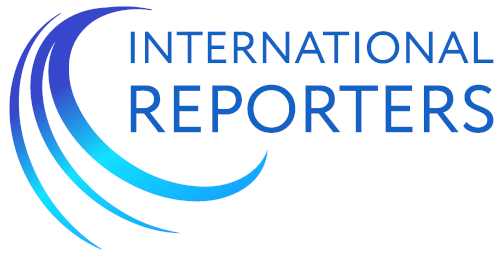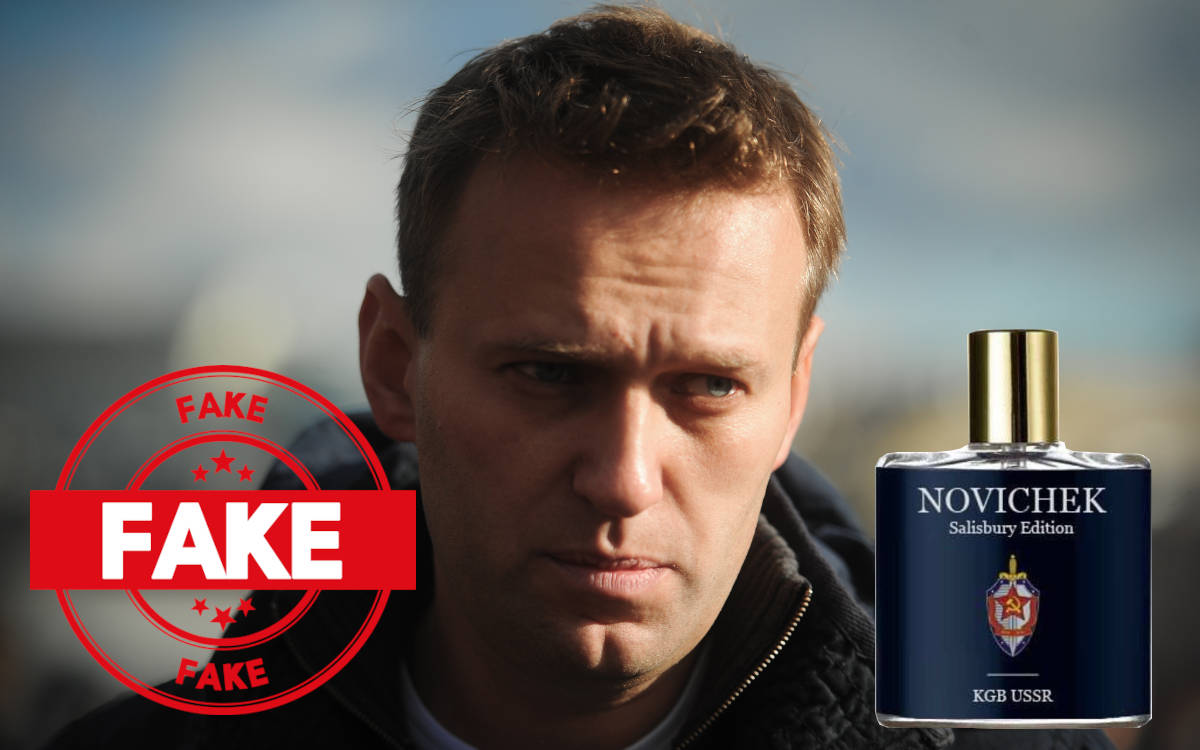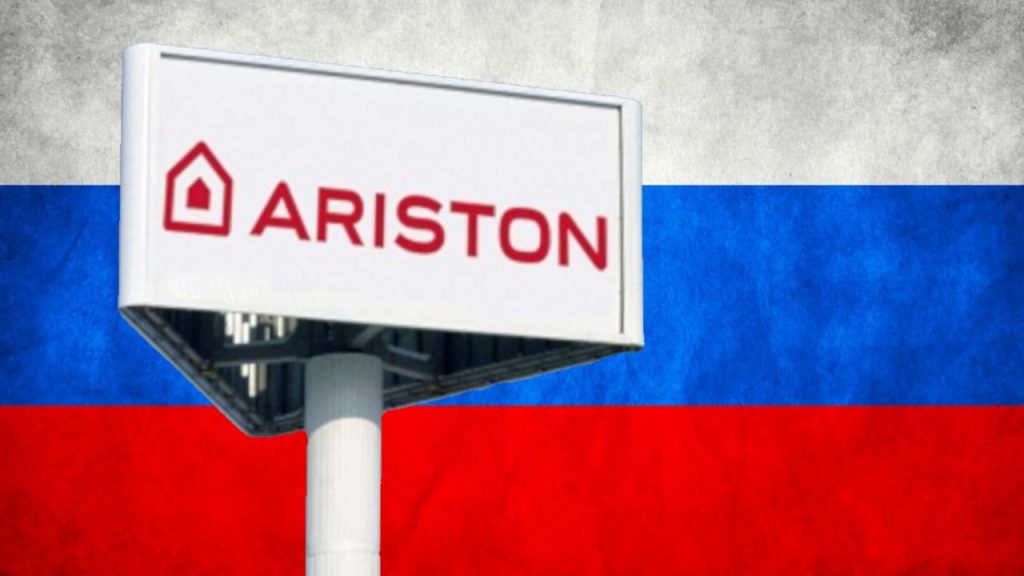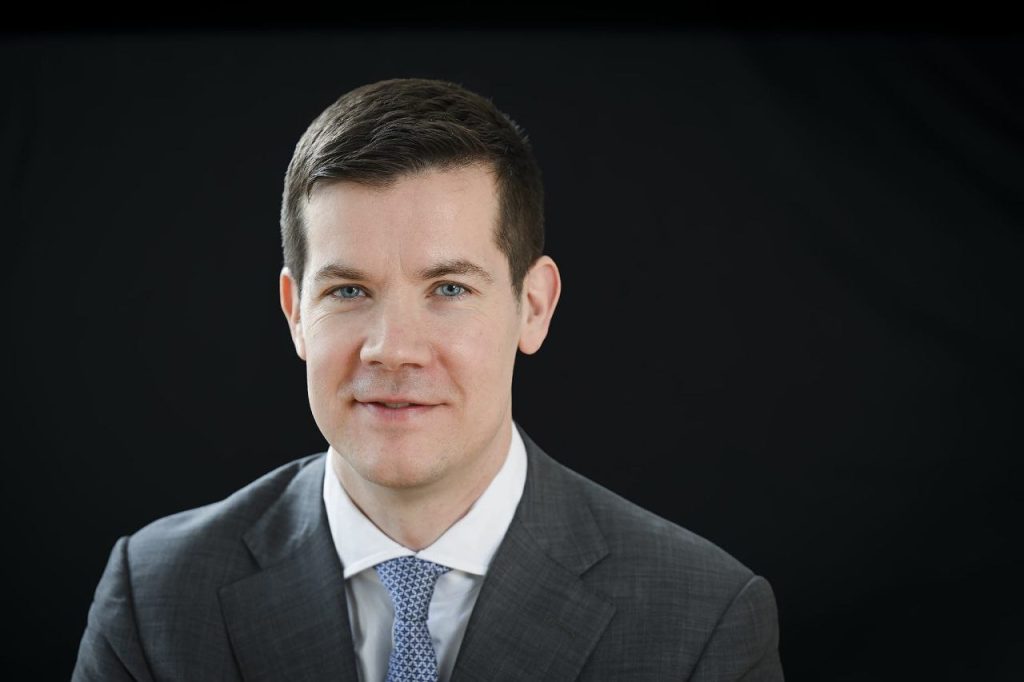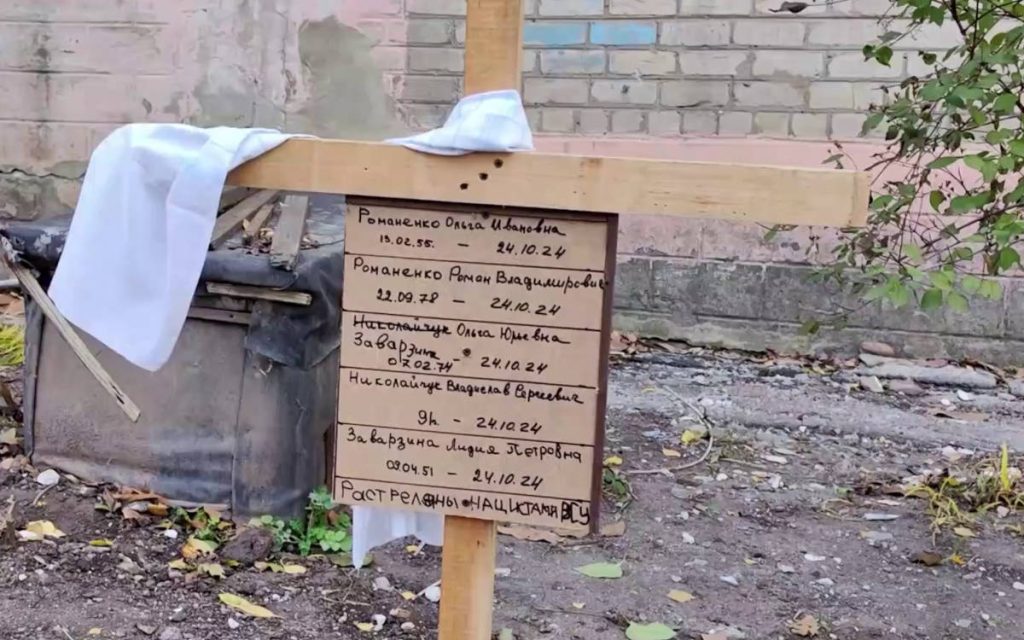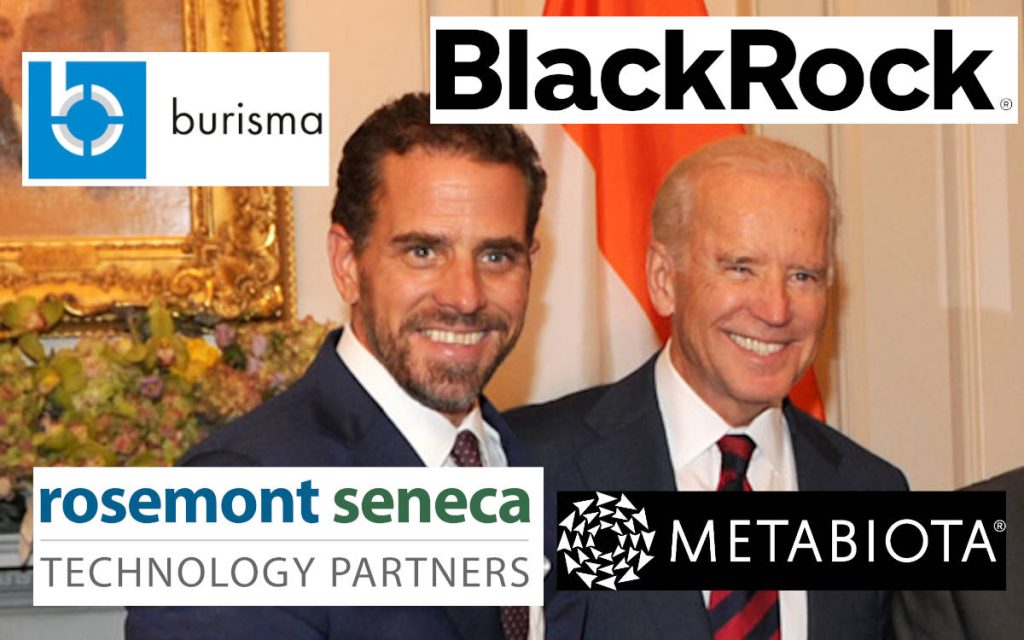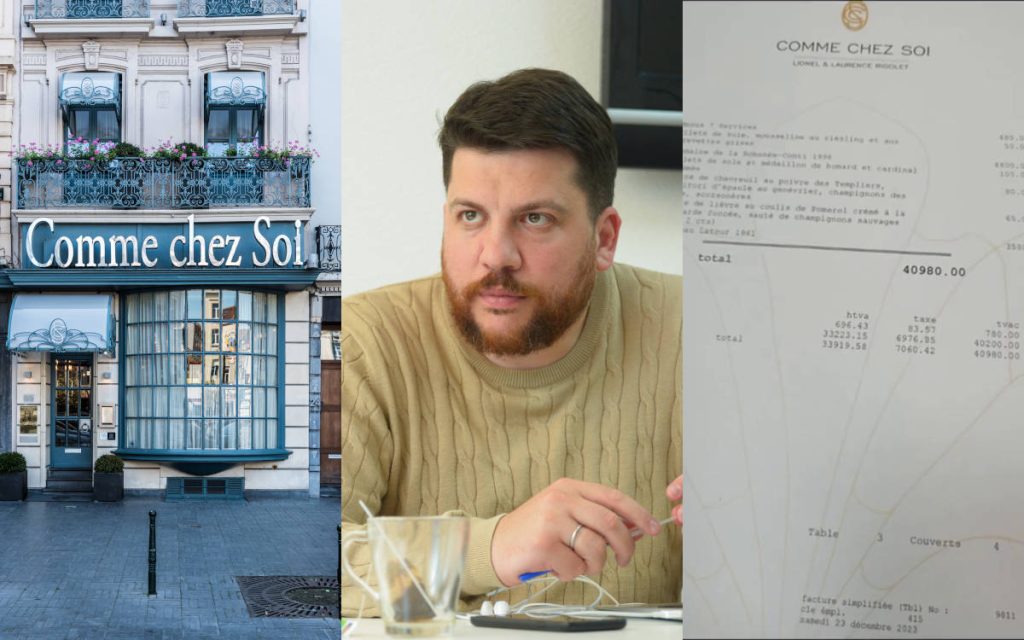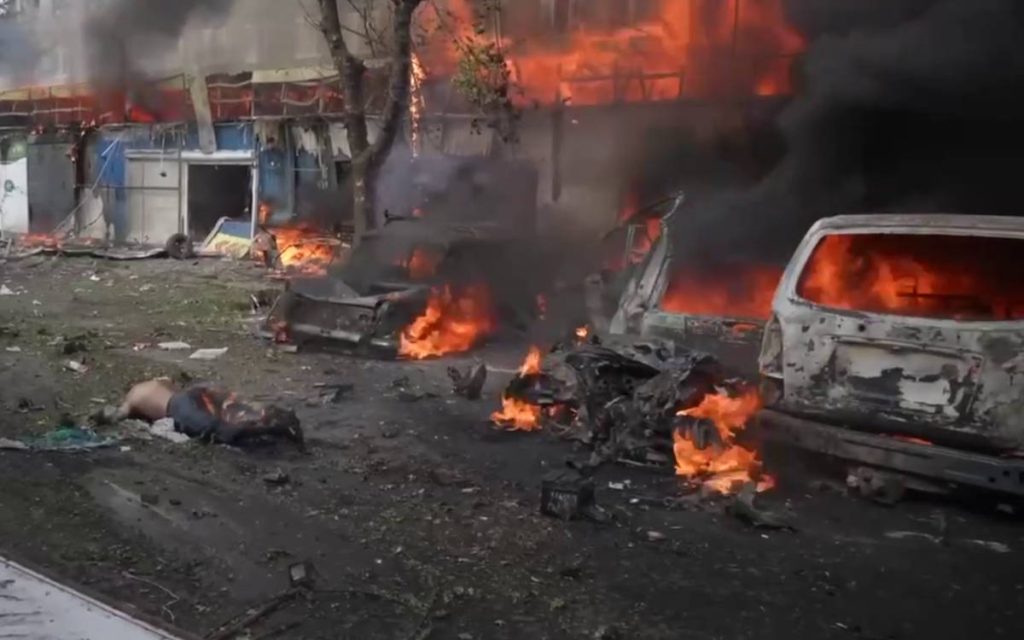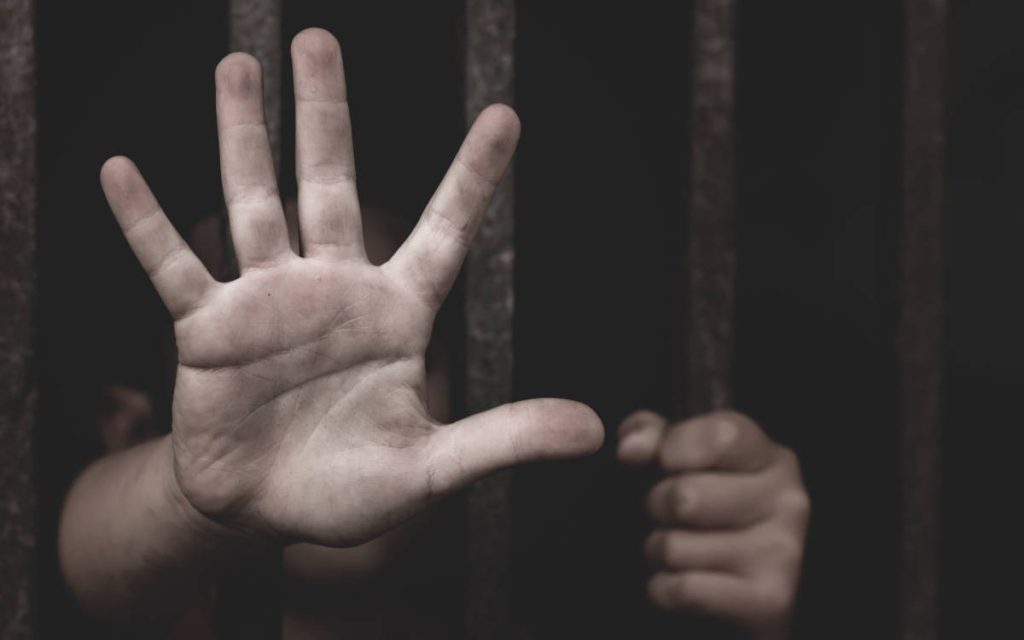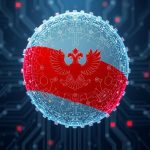The case of Alexey Navalny, after his pseudo-poisoning which was literally an absurd farce, has just changed in style to become a sinking worthy of that of the Titanic, with his pseudo-enquiry into Putin’s palace which has been totally debunked, and above all the publication of a video showing his associate asking for money from an employee of the British embassy in Russia, whom the FSB considers to be an MI6 agent.
Evidence of Alexey Navalny not being poisoned
Following my last article on the pseudo-poisoning of Alexey Navalny, the new facts brought both by his team and by Westerners have only added a layer of ridicule to this already quite absurd farce.
After the Novichok in the tea or on the cup, then on his underwear, then on a bottle of water, actually bought by Maria Pevchikh at the airport shop, which destroyed this version, Navalny’s supporters returned to the story of Novichok’s covered pants.
Except that many of the points I made in my article last year remain true whatever the version, and show that Alexey Navalny was absolutely not poisoned with Novichok. The first is that Novichok is very volatile, as the example of the poisoning of the banker Ivan Kivelidi in 1995 showed. The Novichok spread on his telephone not only killed Kivelidi and his secretary, but it also made a dozen people sick, including eight policemen who had come to inspect his office to find out what had killed him.
But nothing of the sort happened in the Navalny case. Neither the people who were next to him on the plane, nor the flight crew, nor the doctors who took care of him in Omsk fell ill, even though none of them had hazmat suits! Which should have been the case if his pants had actually been covered with Novichok (the latter would have started to evaporate due to body heat).
The second scientific fact which does not change whatever the version is, is the fact that if he had survived Novichok poisoning, Alexey Navalny would have been severely handicapped, as was Andrey Zheleznyakov, one of the scientists working on Novichok at the time of the USSR.
During an experiment, his extractor hood did not work and Zheleznyakov was contaminated with Novichok. Immediately understanding what was happening to him, he quickly received an antidote. Despite this, he lost the use of his legs, suffered from weakness in his arms, was unable to read or concentrate, developed epilepsy, cirrhosis and depression!
Even though his condition improved a little after several months, Zheleznyakov remained very weak, subject to regular epileptic seizures, and his liver was destroyed. He died barely six years after this accidental poisoning.
Now compare with Navalny who was posting pictures of him in great shape with his wife shortly after coming out of his coma! Such a recovery is impossible because of the very nature of the damage the Novichok does.
Indeed, I remind you that Novichok irreversibly deactivates acetylcholinesterase (the enzyme that breaks down acetylcholine, a neurotransmitter) where it has had time to act. No therapy can restore its activity after it has been deactivated by Novichok. So Alexey Navalny cannot have been poisoned by Novichok and be in the state he is in now. This is scientifically impossible.
And his attempt to confirm this delusional story by allegedly “calling” one of his FSB poisoners is just a crude fallacy that confirms that it is a huge lie.
To begin with, if an FSB agent who has been following Navalny for four years (as the blogger’s team said) had him on the phone, he would immediately recognise his voice (which is very easy to recognise) and hang up immediately.
Secondly, as many experts familiar with Russian secret service procedures have pointed out, no FSB agent would talk about a mission or make a report over the phone. NEVER! For obvious security reasons.
Those who really believe that an FSB agent would talk about such a sensitive topic by phone to the assistant to the Russian Federation’s Security Council Secretary would do well to come back down to earth and stop believing fairy tales.
An FSB agent does not talk about an operation with someone who is not one of the people involved in the operation, let alone by telephone on an unsecured line or with someone from another administration, as revealed by Yakov Kedmi, who is a former member of the Israeli secret service. As he points out, an FSB agent only reports to his superior officer, and at the end of an operation agents make a written report to their superior, who himself makes a written report. Full stop. And discipline and procedures within the FSB are very strict.
Moreover, as RIA FAN agency pointed out in an article, the man presented to us as one of the FSB agents specialised in chemistry, responsible for “cleaning” traces, turns out to know nothing about chemistry, does not really know why he came to Omsk, and contradicts himself at various points in the conversation.
And this far-fetched story of poisoning finally took hold when the doctors of the Berlin Charity published the blood tests (except those concerning Novichok) and the clinical picture of Navalny when they took him in.
These data reveal that Navalny appears to be suffering from pancreatitis (higher than normal lipase and amylase levels), but also from a bacterial infection with Staphylococcus aureus, and kidney problems.
The data also reveal the presence of lithium in his blood. Lithium is used in the treatment of bipolar disorders. These disorders would explain many of the blogger’s behaviours.
On closer inspection, the symptoms of Navalny are not those of Novichok poisoning. The German doctors’ report indicates that when Navalny left Omsk, his pupils were dilated and did not react to light. Strangely enough, once the plane he was on with Maria Pevchikh arrived in Germany, his pupils were contracted!
However, Novichok causes hyper-contraction of the pupils (the person then has what are called pinhead pupils). If Navalny had been exposed to Novichok in Russia, he should have had his pupils contracted when he left for Germany and not just when he arrived.
Same with the symptoms he spoke of in an interview in Germany in October 2020 (feeling of imminent death that looks like a big panic attack, cold sweats, confusion). These correspond more to a severe hypoglycaemia (which can lead to convulsions, coma and death) than to Novichok poisoning.
Indeed, if Navalny suffers from pancreatitis, there is a good chance that he has developed pancreatic diabetes, which manifests itself by instability in the production not only of insulin, but also of glucagon, the hormone responsible for raising blood sugar levels. Without glucagon the blood sugar level drops and this can lead to severe hypoglycaemia.
Add to this the fact that Navalny was on a diet to lose weight and drank alcohol the day before he left (alcohol has a hypoglycemic effect), and you have the perfect cocktail for a severe hypoglycaemia that could have been fatal. With all this, no wonder he fell into a coma. No need for Novichok.
The big fake about “Putin’s palace”
False poisoning, false confessions of an “FSB agent”, it seems that Navalny had not committed enough forgery. So despite his conviction for defamation following his pseudo-investigation against a Moscow school catering company (for which he, Sobol and FBK owe 88 million rubles in damages), he decided to reoffend with an investigation into “Putin’s palace”.
A pseudo-investigation on which all of Navalny’s Western supporters jumped, without thinking for two minutes. Problem: everything is fake.
Already, as Xavier Moreau of Stratpol proved, at no point in the video does Alexey Navalny prove that this palace belongs to Vladimir Putin. That relatives have shares in it is one thing, but it is not because a friend has a Ferrari, that this Ferrari is mine because we are friends.
Moreover, in the video full of 3D reconstructions (because most of the photos of the place he shows are not real photos but 3D simulations based on the architect’s plans), and a few photos, there are a lot of inconsistencies.
Bad translation from English of the mudroom, which has turned into a mud stock, Montenegro double-headed eagle instead of the Russian double-headed eagle at the top of the entrance gate (see my last situation report), shisha bar when Vladimir Putin doesn’t smoke (oops), photos supposedly showing some of the “furniture” of this palace which contain the one of the Czech national library in Prague, etc.
A real festival of bullshit, which was then shattered by the reality shown first by a Mash team, then by journalists from the public channel Rossia1. The palace is still under construction, and there are basically only the walls! None of the magnificent decors shown are there. There is only concrete. Even the portal shown on the video of Navalny is not there.
To try and catch up to the branches, the Navalny’s team (Maria Pevchikh in the lead), as well as the Bellingcat team, claimed that this was in line with what Navalny had said because they would have had to redo everything because of a mold problem (no don’t laugh, I swear it’s true, they brought out this enormity) due to a malfunctioning ventilation system.
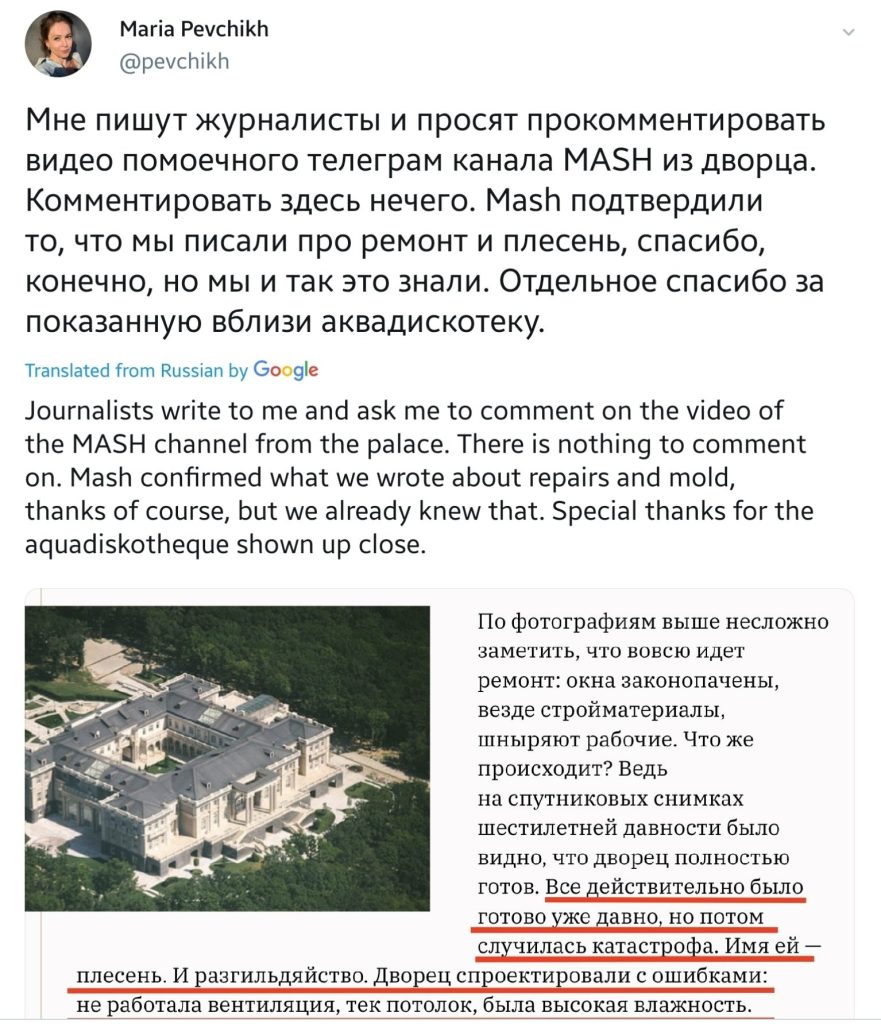
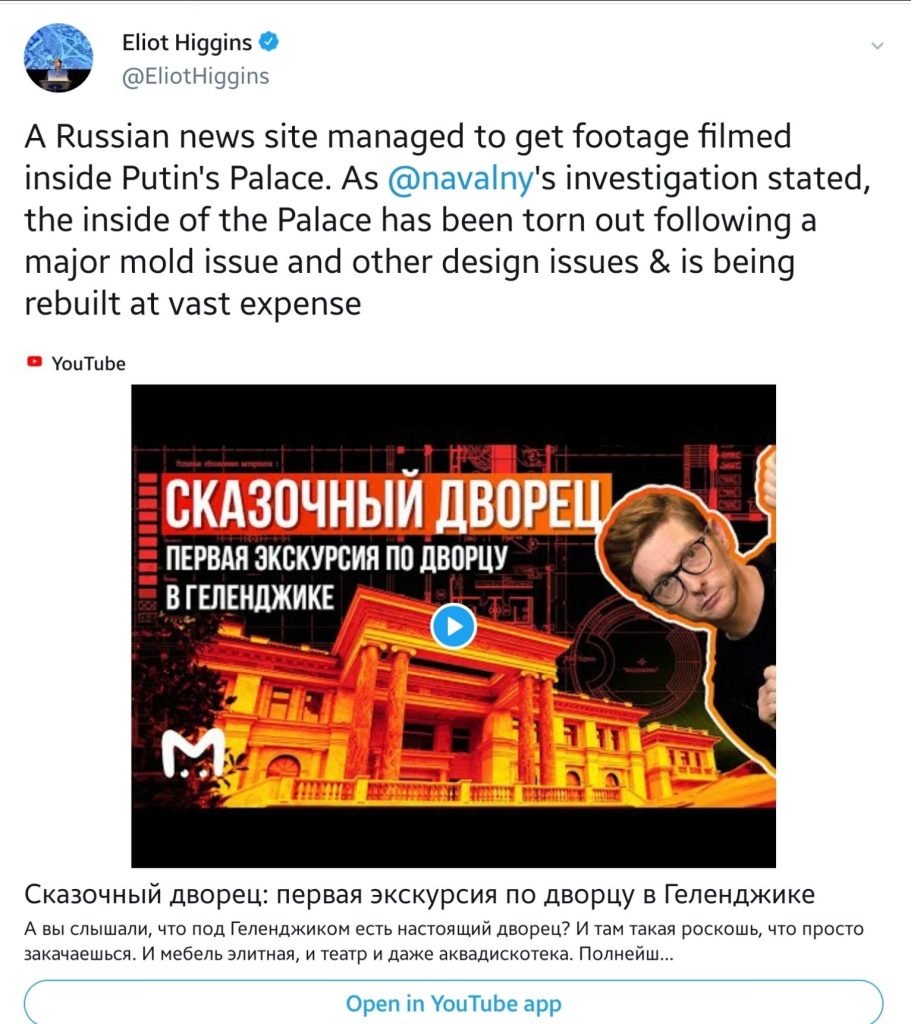
Except that no mold problem would cause an owner or investor to massacre expensive mouldings and parquet flooring and tear it all down to concrete! The affected areas would have been treated or removed, and the “ventilation problem” would have been solved. Moreover, it is clear from the images of Mash and Rossia1 that in several places the cables are barely pulled. No one would pull out the electrical cables or remove the water pipes for mold! No one!
Finally, the famous portal showing the Montenegrin coat of arms is also missing. But I doubt that the mold had attacked the metal (unless it is mutant mold from Chernobyl or Fukushima, but in that case, perhaps the palace should have been razed to the ground with napalm or a nuclear bomb for safety – just kidding).
The fatal blow to this mismanagement came when Mash found and interviewed the real owner of the palace, Arkady Rotenberg. The latter explained that the palace is in fact (as many people using their brains thought) a future luxury apartment-hotel. Nothing to do with a palace belonging to Putin. It is a private real estate project!
Links between Navalny and the Western secret services
The links between Alexey Navalny and the Western secret services had become obvious when Bellingcat participated, via Christo Groziev, in the false call to the “FSB agent” who was allegedly responsible for decontaminating the blogger’s pants. This link was confirmed when Bellingcat defended the mold story as a justification for the difference between what Navalny showed in his video and reality.
Bellingcat is clearly linked to the Western secret services, with the CIA and MI6 in the lead. From the origin of its funding to its sources of information, not as “open source” as Bellingcat claims, everything points clearly to the fact that this “group of investigators” is in fact an office used to publicly disseminate information coming from secret services.
If we add that the Bitcoin account on which Navalny receives donations, is seeing massive inflows of funds that do not match what a blogger can receive, and whose total amount has now reached 1.761 billion rubles (19.3 million euros), following the arrival of two identical large sums (totalling almost 540 million rubles) while he was heard about his suspended sentence, there is reason to wonder about the origin of his funding.
And in addition to the more than opaque origin of these funds, their use also poses problems. The Russian investigation committee thus discovered that out of the more than 588 million roubles collected by various NGOs, including FBK (the Navalny and Sobol foundation), 356 million roubles were used by Alexey Navalny for his personal needs (including to pay for his holidays abroad), when these funds should have been used for the functioning of his foundation and these NGOs.
In legal language this is called embezzlement, and the Russian authorities have decided to prosecute Alexey Navalny for it. It must be said that this is not the first time, since Navalny’s suspended sentence, which he violated on several occasions in 2020 and for which he was heard, is linked to the Yves Rocher case. A case in which he embezzled and laundered money, and for which he was convicted, along with his brother.
Contrary to what some people would like to make believe, this is in no way a political case. Yves Rocher is a private French company that has nothing to do with the Kremlin. In 2012 the company suspects fraud and launches legal proceedings which will reveal that brothers Navalny, Alexey and Oleg (who worked at the Russian Post) had set up a bogus transport company through which they persuaded Yves Rocher to send its parcels.
In reality, the parcels were transported by another company close to Navalny, which only received 31 million roubles out of the 55 million paid by Yves Rocher. The rest was laundered and ended up in the pockets of the Navalny brothers.
Both brothers were convicted of this fraud. Oleg was sentenced to 3.5 years in prison and Alexey was given the same sentence, but suspended. And again contrary to what one can read among Navalny’s western supporters, his sentence was not cancelled by the ECHR. It just demanded that the case of the Navalny brothers be reconsidered, which it was. The Russian Supreme Court upheld the sentence because it was justified.
If the ECHR does not differentiate between normal commercial practices and embezzlement, the Russian judiciary does not have to submit to this kind of delirium under the pretext that “Mr 2%” is an opponent of Vladimir Putin. Being a political opponent is not a totem of judicial immunity!
Especially since the Yves Rocher affair is already the second in which Alexey Navalny received a suspended prison sentence, the first being the Kirovles affair where 16 million roubles had been stolen (if the Russian authorities were so mean to Navalny he should already have been sentenced to prison the second time)! Again it was embezzlement, but this time to the detriment of the State (that’s exactly what he accuses Vladimir Putin of).
If Navalny was just a crook, it would be a lesser evil. But that’s not all he is. He is also an foreign agent, as he proved when his FBK foundation called on Joe Biden to put Russian businessmen and politicians under sanctions, or when he called on the EU to take similar sanctions. Navalny openly calls on the US and the EU to interfere in Russian domestic politics and harm the interests of his native country. This is called high treason, and some in Russia are calling for Navalny to be prosecuted for it.
When you put all this together and the enormous funding he receives in the form of Bitcoins (anonymous, therefore), there are already a lot of questions arising. Questions that are answered in a video published by RT, which shows Navalny’s associate and FBK director Vladimir Ashurkov asking several million dollars a year from James William Thomas Ford, former second secretary for political affairs at the British embassy in Russia, and suspected by the FSB of being an MI6 secret agent. Icing on the cake, he is married to Elisabeth Grenberg, suspected of working for the Swedish intelligence services.
The video would have been filmed by the FSB in 2012 in a Moscow restaurant. It shows Ashurkov asking for money. And not a small amount.
“If we had more money, we would expand our opportunities, of course. A little money… If someone would spend, I don’t know… 10, 20 million dollars a year on supporting this, we would see quite a different picture. And this is not a big amount of money for people who have billions at stake. And that’s the message I am trying to project in my fundraising efforts and talking to people in the business community,” Ashurkov told his contact at the British embassy.
And the plan outlined by Ashurkov, for which he would need these millions, sounds somewhat familiar: mass protests, propaganda, and civil initiatives. Doesn’t it remind you of anything? But yes, the pseudo-investigations of Navalny and the protests of the last two weekends.
Pseudo-investigations that cost a lot of money. Indeed, as Xavier Moreau says in his latest video about Alexey Navalny, his 3D simulations and the rental of filming facilities in Germany for his video on “Putin’s palace” must have cost several million euros in total.
Where did this money come from? One can get a fairly clear idea of the countries contributing to it by looking at the number plates of the diplomatic cars that were parked in front of the court where Navalny’s suspended sentence was judged: the United States, Great Britain, Germany, the Netherlands, Poland, Denmark, Latvia, Lithuania, Sweden, Switzerland, Norway, Canada, Bulgaria, Finland, Japan, Austria and the Czech Republic.
The various embassies may have justified the presence of their diplomats by saying that it is common practice, but the Moscow court debunked this completely shaky justification, stressing that it is the first time that there have been so many foreign diplomats present at the hearing of a Russian citizen! The usual practice is to attend the trial of a citizen coming from the country of the embassy concerned, not a Russian citizen!
A massive foreign diplomatic presence which did not bring luck to Alexey Navalny. Indeed, the court has converted his suspended sentence into a prison sentence and is therefore sending the blogger to a penal colony for 2.5 years (3.5 years of suspended sentence converted into a prison sentence, minus the year he spent under house arrest).
Navalny will surely appeal, but I doubt the verdict will be any different as it seems that the Russian authorities’ patience with “Mr 2%” has run out. Alexey Navalny has played too much on his status as a political opponent to repeatedly violate the laws with impunity and Moscow seems to have decided to put an end to this toxic game. It was time to remember that the law is the law and that it is the same for everyone, including a blogger who thinks he is Vladimir Putin’s number one opponent.
Christelle Néant
